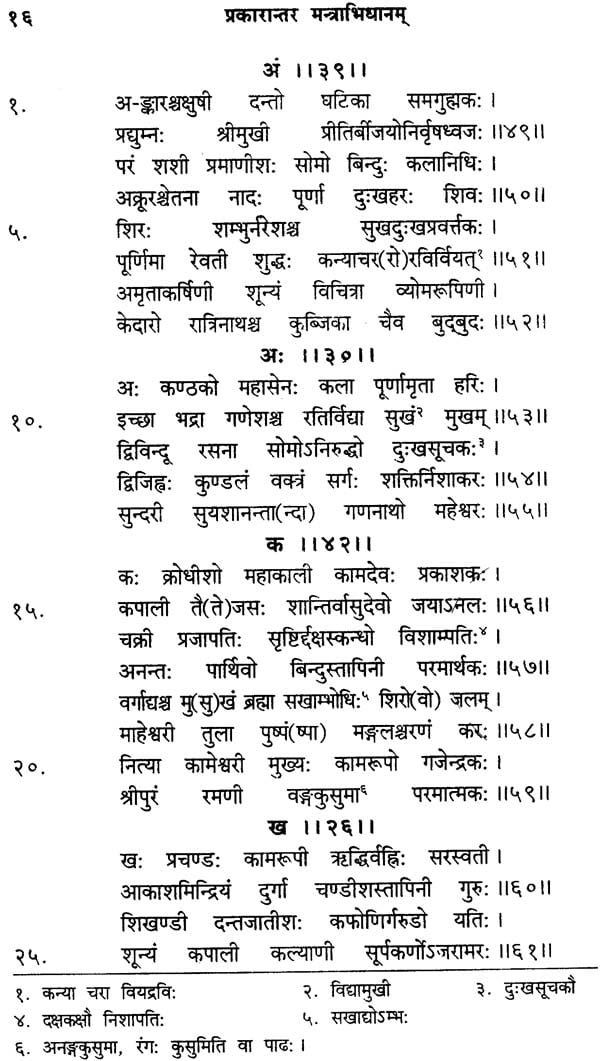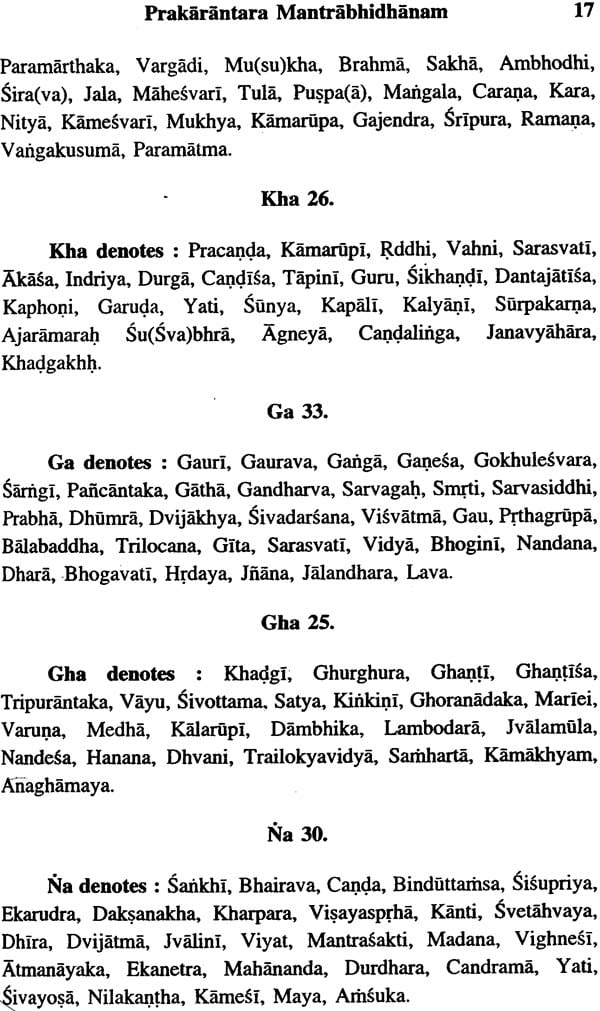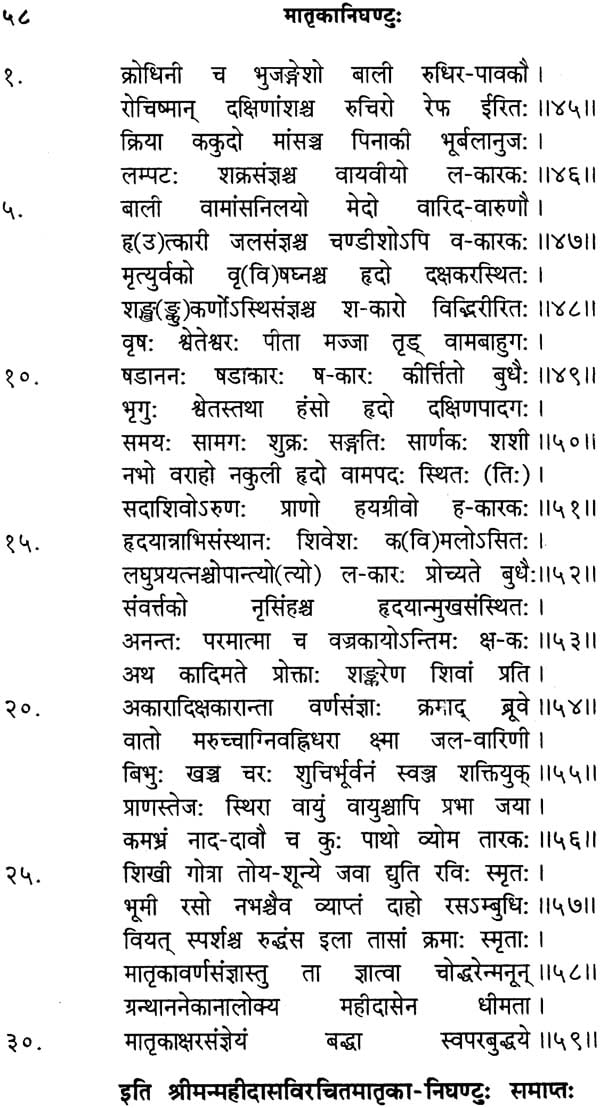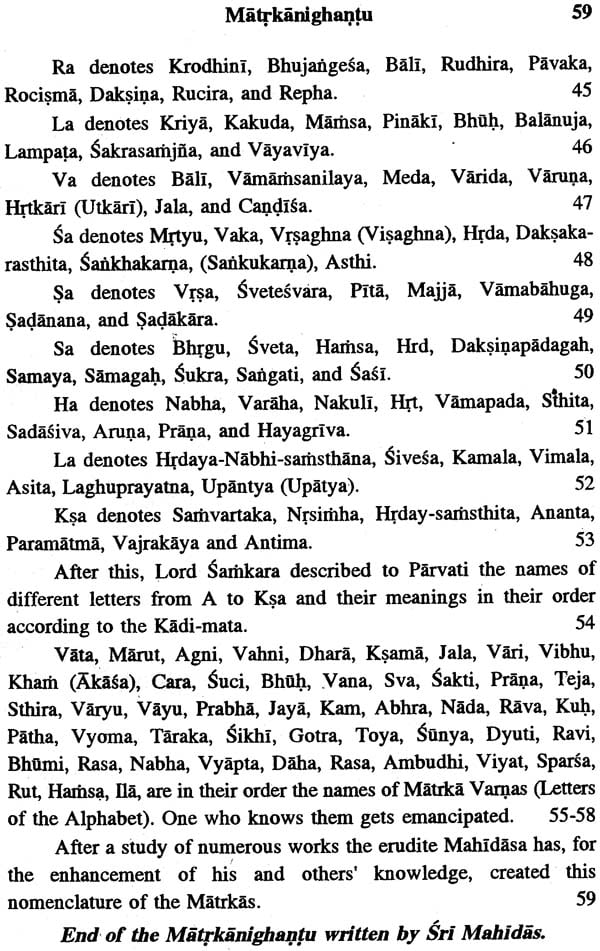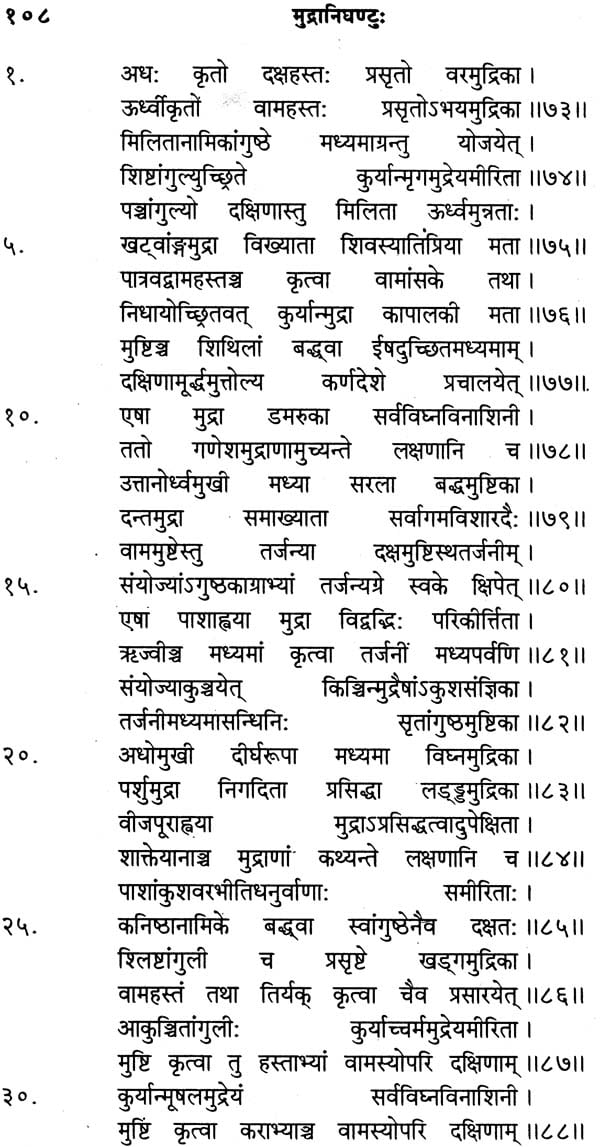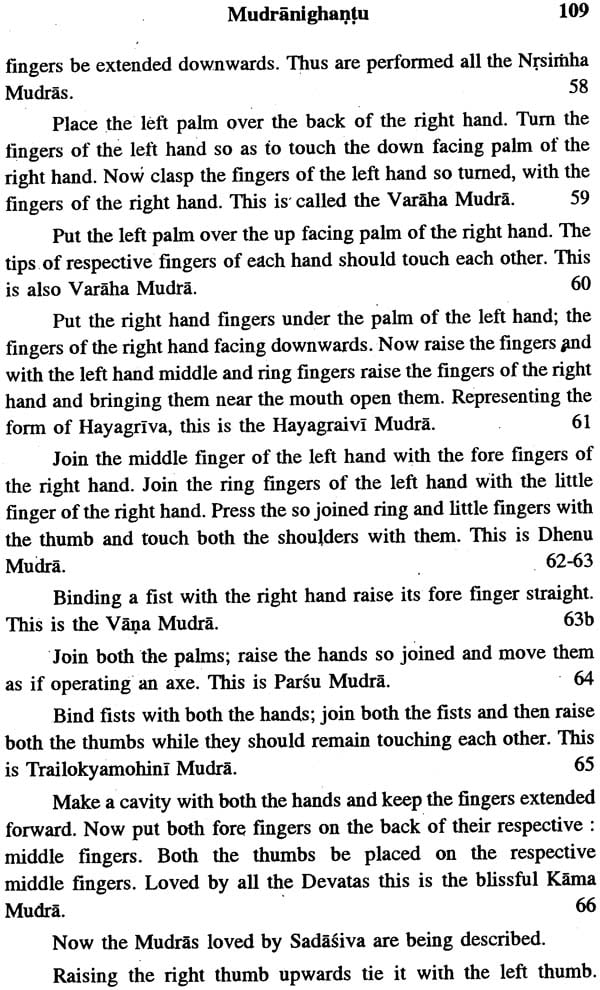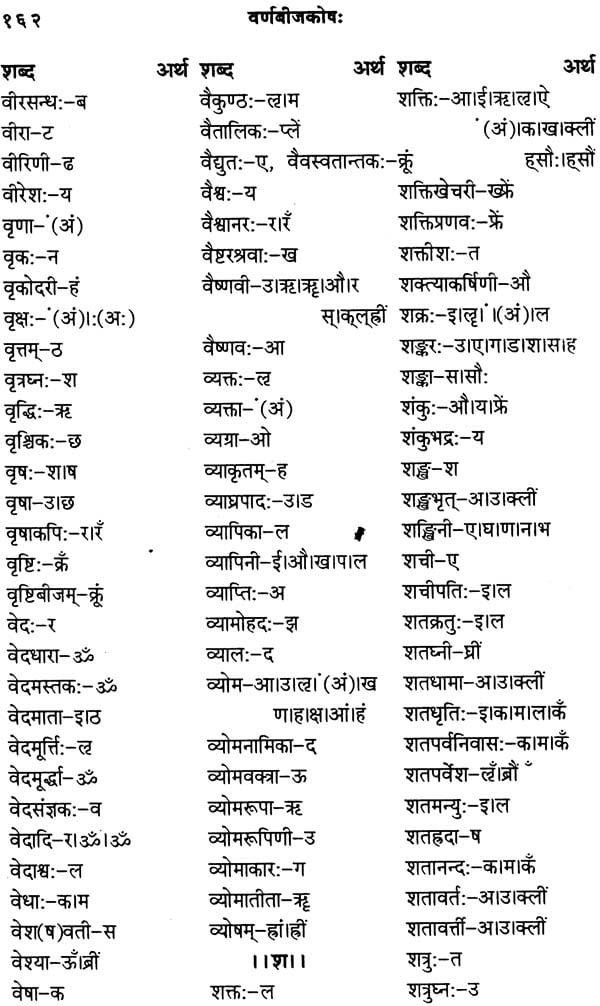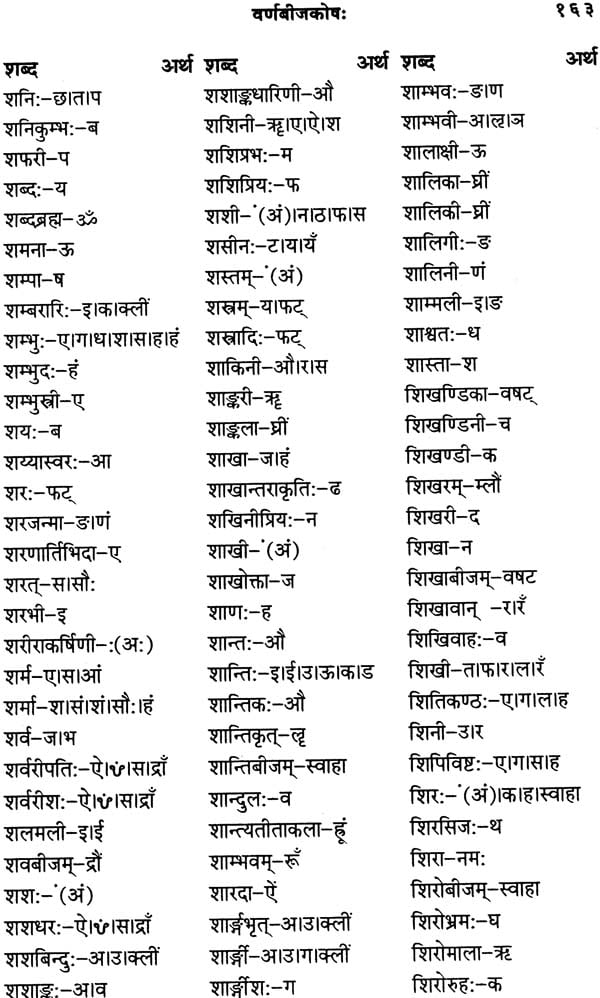
Dictionaries of Tantra Sastra Or The Tantrabhidhanam
Book Specification
| Item Code: | IDI598 |
| Author: | Ram Kumar Rai |
| Publisher: | Prachya Prakashan, Varanasi |
| Edition: | 2005 |
| Pages: | 175 |
| Cover: | Hardcover |
| Other Details | 8.5" X 5.3" |
| Weight | 250 gm |
Book Description
Preface
The Tantra literature of India, though in most cases almost lost, is still the only source whence a knowledge of Sadhana in all its aspects-theoretical, practical and ritualistic-may be derived and understood, because it is a Practical (Pratysa) Science. However, the Sastra in its literature is not a plain exposition, which would reveal its intricacies to anyone who lays a hand on it. The Initiation from the Guru is therefore essential. In fact it has been repeatedly emphasized in the Sastra that it can be fully understood only by such an Initiation-Srinatha vaktrat. However, if the subsequent tools which unravel the mysteries of Texts and also assist the process of decoding the Mantras concealed in the Text, are available, a Sadhaka can achieve some practical result. Today when worthy Teachers (Sadgurus) are getting scarce such tools become all the more essential. The various Abhidhanas or Dictionaries come under this category.
These Abhidhanas and Kosas contain some of those methods, which help deciphering the relationships of Sabda and Artha as they are put forward in the Sastras. Therefore, when a true knowledge of this relationship is acquired, the significance of Sabda and Artha is fully realised. As Abhidhana is essentially necessary for the understanding of other Sastras, likewise Sabdartha-jnana is essential for the understanding of Tantrasastra. The Upasana as denoted in the Agamasastra is absolutely impossible without a complete understanding of the significance of Mantras. The particular Upasana of a particular Devata by means of a definite Mantra as laid down in the Tantras, is not possible to be gone through unless and until the significance of that Mantra is at the very beginning realised. No fruit is derived from a Mantra if it is used without being understood. This understanding of a Bija or a Mantra is never possible without the help of a Abhidhana. As for example, the Ekaksara Mantra of Kali is Krim. This is derived from the unification. Wherever this Bijaksara has been referred to in the Agamasastra no mention is made of this simple unification of which the Bijaksara is constituted. Only a few apparently unintelligible Sabdas are given there. If the meaning of these Sabdas are not understood this Ekaksara-bija of Kali cannot be comprehended in its fullest significance. A few other examples would further clarify this point.
In the Triput-stotra it is said: "Such as recite the first of thy golden Bija Bakam placed on Vahni accompanied by Trimurti combined with Sasanka, attain all prosperity." (Bakam vahnisamsthitam trimureya prajustam sasankena yuktam).
This statement in itself may be completely unintelligible; but if all the technical words are substituted by the Bijaksaras then everything would become clear: Bakam, which ordinarily means a crane, is Sa in its special Bija-sense; Vahni or fire is Ra, Trimurti or the Trinity is I, and Sasanka or the moon is the Candrabindu. The Bija-mantra, therefore; denoted by the Sloka is combination of all these Aksaras, viz., Sa + Ra + I + Candrabindu which becomes Srim. This Srim is the Bija-mantra of Laksmi the Goddess of Prosperity. Therefore, Japa of this Mantra brings to the Sadhaka Prosperity, as said in the Sloka.
A reference to the Kosas under the Devanagari letters would show that one letter connotes several Deities. For example, I stands for Trinity, Rati, Govinda, Vamaksi, Kamala, Kala, Maya, Laksmi, santi and Vaisnavi.
These examples are enough to emphasize the necessity of consultation of various Kosas or the Dictionaries of Tantra.
It was customary with Acaryas of the past to make excerpts from Tantras of such portions as might be of general importance and current use. The various Mantrabhidhanas and Nighantus are such excerpts which were originally parts of bigger Tantrika words. Besides, there are certain other works of Dictionary class which were written exclusively to facilitate deciphering of the Mantras which are usually given in the Texts in a covert form.
Most of these Kosas are, however, either lost or not available long back Sir John Woodroffe collected and published them, but only in their Textual form. His edition also is not available, although its necessity was always being felt. Therefore, when the Publishers proposed to bring it out not only in its original form but with an English translation, I readily agreed to it although fully conscious of my limitations.
The works of Dictionary class included in the present collection can be placed under different categories. The Prakarantara Mantrabhidhana is reputed to be a part of the Rudrayamala Tantra. The Matrkanighantu and the Bija-nighantu by Bhairava are Dictionaries of the single vowels and consonants of Devanagari alphabet. The Ekaksara-kosa gives the meanings of one lettered words and Dvayaksara-kosa of two-lettered words. Both are ancient Dictionaries, but differ from Matrkanighantu and Bijanighantu in as much as the Ekaksara and Dvayaksara state the general literary meaning of the words. While the latter give their technical meaning according to Tantras. Thus, whereas the letter Ka in its general sense means 'water' in special or technical sense in the Sastras denotes Krodhisa who is one of the Bhairava.
The Bijanighantu, Matrkanighantu, and Mudranighantu are divisions of Mantra-kosa.
The modes of Bijoddhara have been illustrated in Bijanighantu and Bijabhidhana and in some places the Vacaka Sabdas of these have been mentioned. A Sadhaka's duty does not end with the recital of these Bijas only; he should also know the meaning of the Bija. For very reason, it is useless to perform the Upasana of a Bija without knowing its import in full. For the purpose of easily understanding the significance of the Bijas, the Mantrarthabhidhana of the Varada Tantra, as presented here, may be found useful. Although all the Bijas have not been mentioned in it, yet with a little insight the Sadhaka will be able to glean out the meaning of other Bijas by working along the line shown in the stock examples of the Text.
At the end a Varnabijakosa has been given which contains meanings of nearly five thousand Tantrika words.
How far I have succeeded in bringing out the subtleties of meanings contained in the obscure and difficult slokas concealing the meanings in a mystified form, I am not certain; but I am sure about the earnestness of my efforts. I hope the work will prove considerably helpful to the Sadhakas in the determination of Mantra and Deity for their Sadhana.
| Preface | iii |
| Mantrabhidhanam | 2 |
| Prakarantra Mantrabhidhanam | 8 |
| Ekaksarakosa | 34 |
| Bijanighantu | 40 |
| Matrkanighantu | 52 |
| Prakarantara Matrkanighantu I | 60 |
| Prakarantara Matrkanighantu II | 68 |
| Prakarantara Varnanighantu | 78 |
| Bijabhidhanam of Bhutadamara Tantra | 88 |
| Mantrarthabhidhanam of Varada Tantra | 94 |
| Mudranighantu | 98 |
| Varnabijakosa | 121 |
